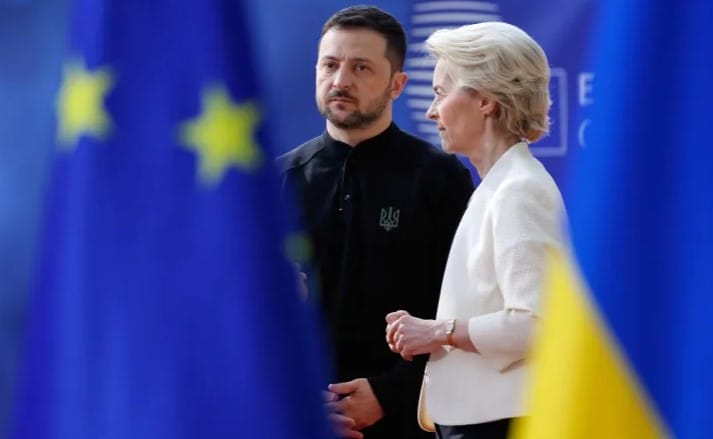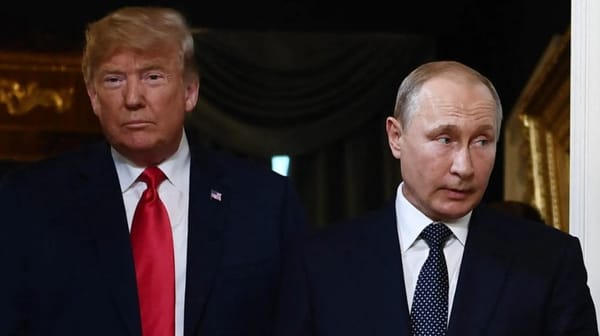Europe’s Geopolitical Awakening: The Ukraine War and the Transformation of EU Security

Introduction
Europe stands at a historic crossroads. The ongoing war in Ukraine, now in its fourth year, has not only upended the continent’s security architecture but also triggered a profound transformation in the European Union’s approach to defense, economic policy, and international relations. Once seen as a project of peace and economic integration, the EU is now rapidly evolving into a geopolitical actor-one that is investing in “hard power,” developing strategic autonomy, and forging new tools to confront threats from Russia and beyond.
This report examines the centrality of the Ukraine war in Europe’s current geopolitical moment, the EU’s unprecedented response in terms of sanctions, military assistance, and defense integration, and the broader implications for European and global security. Drawing on recent developments and policy shifts, it explores how the continent’s “geopolitical awakening” is reshaping not only its own future, but also the balance of power in the wider world.
I. The Ukraine War: Catalyst for Change
A Shattered Security Order
Russia’s full-scale invasion of Ukraine in February 2022 marked the end of the post-Cold War security order in Europe. For decades, European states had relied on a combination of American security guarantees, economic interdependence, and diplomatic engagement to manage relations with Russia. The invasion exposed the limits of this approach, revealing the Kremlin’s willingness to use force to achieve its aims and disregard for international norms.
The war has since become a grinding, attritional conflict, with Russia making slow gains in Ukraine’s east and south, and Ukraine mounting fierce resistance with Western support. The stakes are existential for both Kyiv and the European order: a Russian victory would not only subjugate Ukraine but also embolden Moscow’s ambitions in Moldova, the Baltics, and beyond[1]. European leaders now see Russia as an enduring and risk-tolerant threat, one that cannot be deterred by past methods.
The EU’s Response: From Soft to Hard Power
The invasion triggered an unprecedented response from the EU. Within days, the bloc adopted sweeping sanctions, provided lethal military aid to Ukraine, and began rethinking its entire security posture. What began as an emergency reaction has become a sustained transformation. The EU is now on its 17th package of sanctions against Russia, has pledged more than $157 billion in aid to Ukraine, and is actively developing its own defense capabilities and strategic autonomy[2][3].
II. Sanctions and Economic Warfare
The Evolution of EU Sanctions
Sanctions have been the EU’s primary tool for pressuring Russia. Since 2022, the bloc has imposed 17 rounds of measures targeting Russian banks, energy exports, technology, and individuals connected to the Kremlin. The latest package, approved in May 2025, blacklists around 200 oil tankers suspected of helping Russia circumvent oil export restrictions, targets companies in third countries supplying Russia’s military, and adds dozens of new individuals to the sanctions list[3:1].
However, the effectiveness of sanctions has been mixed. While they have constrained Russia’s access to technology and finance, high oil prices and increased military spending have allowed the Russian economy to outperform many expectations[4]. EU officials acknowledge that sanctions have not yet succeeded in halting the conflict, and there is growing debate about how to escalate pressure further.
New Measures Under Consideration
The European Commission is now considering even more severe steps, including:
- Capital Controls: Restricting the flow of money in and out of Russia, limiting foreign investment, and imposing taxes on capital movement[4:1].
- Tariffs and Trade Bans: Imposing tariffs on Russian goods and phasing out new Russian gas contracts, with a complete ban on spot market gas purchases by 2027[4:2].
- Targeting the Shadow Fleet: Blacklisting tankers and companies that help Russia evade oil sanctions, including entities in Vietnam, Serbia, and Turkey[3:2].
The challenge remains achieving consensus among all 27 EU member states, as sanctions often require unanimity and can have significant economic repercussions for the bloc itself[5].
The Limits and Impact of Sanctions
Despite their scope, sanctions have not forced Russia to the negotiating table. European leaders, particularly in France and Germany, now argue that only a more aggressive approach-potentially in concert with the United States-can “suffocate” the Russian economy and compel President Vladimir Putin to end the war[5:1]. There is also recognition that Russia has adapted to many restrictions, finding new markets and methods to bypass Western controls.
Still, sanctions have had real effects: they have isolated Russia financially, restricted its access to advanced technology, and forced the Kremlin to rely increasingly on China and other non-Western partners. The EU’s willingness to escalate further remains a key variable in the conflict’s trajectory.
III. Military Support and Defense Integration
Massive Military Aid to Ukraine
The EU has emerged as a critical source of military support for Ukraine. As of May 2025, Europe has pledged to supply over 1.35 million rounds of artillery shells in the coming year and to allocate nearly €1.9 billion (about $2.1 billion) from frozen Russian assets for military aid[2:1]. This includes:
- Direct purchases of weapons from Ukrainian manufacturers, following the Danish model.
- Funding for artillery, ammunition, and air defense systems.
- Maintenance and support for advanced Western weaponry, such as the French CEASAR howitzers.
Since the start of the invasion, European aid to Ukraine has totaled €138 billion ($157 billion), surpassing U.S. commitments in some areas and reflecting a growing sense of responsibility for the continent’s security[2:2].
Defense Industry Revitalization
The war has exposed critical gaps in Europe’s defense industrial base. High-intensity warfare has consumed weapons stocks at an unprecedented rate, prompting the EU to invest heavily in ramping up production, streamlining procurement, and supporting defense innovation[6]. Key initiatives include:
- The ReArm Europe Plan and the White Paper for European Defence – Readiness 2030, which outline a framework for closing capability gaps, increasing collaborative procurement, and supporting the defense industry through aggregated demand[6:1].
- The Act in Support of Ammunition Production and joint procurement mechanisms to ensure steady supplies of key munitions for Ukraine and European forces[7].
- Efforts to deepen the EU-wide defense market, simplify regulations, and accelerate the adoption of disruptive technologies.
These measures are designed not only to support Ukraine but also to ensure that the EU can defend itself independently if necessary.
Toward a European Defence Union
The European Commission’s 2025 work programme calls for the creation of a real European Defence Union (EDU), with increased spending, closer cooperation with NATO, and the development of a proactive security strategy[8]. The forthcoming White Paper on the Future of European Defence will lay out the actions needed to achieve this vision, including:
- Enhancing military mobility and readiness for worst-case scenarios.
- Stockpiling critical supplies and strengthening external borders.
- Deepening partnerships with third countries and supporting the integration of Ukraine and other candidates into European security structures.
This marks a decisive shift from a reactive to a proactive approach to security and defense.
IV. Strategic Autonomy and the “Geopolitical Awakening”
From Soft Power to Hard Power
The EU’s response to the Ukraine war has accelerated its transition from a “soft power” actor-focused on economic integration, diplomacy, and development-to one that is willing and able to wield “hard power” in defense of its interests[7:1]. This shift, often described as a “geopolitical awakening,” is evident in several areas:
- The use of trade, investment, and technology policy as tools of security, including export controls, investment screening, and the Critical Raw Materials Act (CRMA)[7:2].
- The transformation of the European Peace Facility (EPF) to provide lethal aid to Ukraine and the establishment of a dedicated Ukraine Assistance Fund.
- The pursuit of strategic autonomy, reducing reliance on the United States and other external actors for security guarantees and critical supplies.
Challenges of Unity and Consensus
Achieving strategic autonomy is not without challenges. The EU’s 27 member states have diverse threat perceptions, economic interests, and political priorities. Building consensus on sanctions, defense spending, and military deployments can be slow and contentious[5:2][3:3]. The need for unanimity on key decisions sometimes limits the speed and scope of EU action.
Nevertheless, the urgency of the Ukraine war has fostered greater unity than at any time in recent history. Initiatives like Permanent Structured Cooperation (PESCO) and the European Defence Fund (EDF) have laid the groundwork for deeper collaboration, while the war has provided the impetus for real progress.
The U.S. Factor and Transatlantic Relations
The evolving U.S. foreign policy posture, particularly under President Trump’s second term, has added urgency to Europe’s drive for strategic autonomy[9][1:1]. The Trump administration’s signals of reduced commitment to NATO and pauses in military assistance to Ukraine have forced European leaders to confront the possibility of defending the continent largely on their own.
As a result, the EU is not only increasing its own defense spending-President Ursula von der Leyen has unveiled an $840 billion plan to boost investment-but also seeking to strengthen its defense industrial base and reduce dependence on American capabilities[9:1]. The future of transatlantic relations remains uncertain, but Europe is determined to be prepared for all scenarios.
V. NATO, Deterrence, and the Eastern Flank
Reinforcing the Alliance
The war in Ukraine has also revitalized NATO. The Alliance has expanded its deployments along the eastern flank, with multinational battlegroups in Central and Eastern Europe and a renewed emphasis on collective defense[10]. However, experts argue that these deployments remain more of a “trip-wire” than a robust deterrent, and call for:
- Upgrading battlegroups to permanent brigades with full enabling capabilities.
- Conducting large-scale, concentrated joint exercises on the eastern flank.
- Upgrading air and missile defense systems to counter Russian threats, including long-range missile and drone strikes.
Defense Spending and Industrial Capacity
NATO’s new regional defense plans require European allies to generate more forces, with the necessary firepower, mobility, and enabling capacities. There is growing pressure to increase the agreed floor for defense spending from 2% to as much as 5% of GDP, and to expand the defense-industrial base to match the scale of high-intensity warfare[10:1].
Ukraine’s NATO Aspirations
A key element of the emerging security order is Ukraine’s path to NATO membership. While the Alliance has not yet offered a formal invitation, there is growing support for accelerating Ukraine’s accession as a means of deterring further Russian aggression and providing the security guarantees needed for reconstruction and integration into Europe[10:2].
VI. Diplomacy, Risk Management, and the Future Security Order
Diplomacy and Deterrence
While military support and sanctions are central to the EU’s response, there is also recognition of the need for diplomacy. European leaders, together with the United States, are exploring ways to manage risks with Russia, including limits on weapons deployments and confidence-building measures[1:2]. The aim is to prevent escalation, reduce the risk of nuclear confrontation, and lay the groundwork for a future settlement.
The Shape of a Durable Peace
A lasting settlement would require:
- Ukraine’s sovereignty and territorial integrity to be respected.
- Russia to be deterred from renewed aggression by the high costs imposed by the West.
- Europe to be more self-reliant and resilient in its security arrangements.
- All parties to be willing to discuss risk mitigation and arms control measures on an increasingly militarized continent[1:3].
The obstacles to such a settlement are formidable, not least because of deep mistrust and the absence of attractive options for either side. However, the search for diplomatic solutions remains a priority for many European capitals.
VII. Broader Implications and Future Challenges
Economic Security and Supply Chains
The war has underscored the importance of economic security and resilient supply chains. The EU is investing in critical raw materials, energy diversification, and the protection of strategic infrastructure, such as undersea cables and pipelines[7:3][3:4]. New regulations and investment strategies are being developed to reduce vulnerabilities and ensure the sustainability of Europe’s green and digital transitions.
Migration, Social Cohesion, and Internal Security
The conflict has also had profound effects on migration, social cohesion, and internal security. The EU’s 2025 work programme prioritizes the implementation of the new Migration and Asylum Pact, enhanced border security, and measures to address the cost of living and inequality[8:1]. These efforts are seen as essential to maintaining public support for the EU’s broader geopolitical ambitions.
The Challenge of Consensus and Political Will
Perhaps the greatest challenge facing Europe is maintaining unity and political will over the long term. As the war drags on and the costs mount, there is a risk of fatigue and division. Populist and nationalist movements in several member states continue to question the wisdom of deepening integration and increasing defense spending.
Nevertheless, the sense of existential threat posed by Russia has, for now, forged an unprecedented degree of solidarity and resolve among European governments.
Conclusion
The war in Ukraine has forced Europe to confront hard truths about its security, its values, and its place in the world. The EU’s “geopolitical awakening” is not a passing phase, but a fundamental transformation-one that is reshaping the continent’s institutions, economies, and societies.
Through unprecedented sanctions, massive military aid, and far-reaching reforms to its defense and economic policies, the EU is seeking not only to support Ukraine but also to ensure its own security and autonomy in a dangerous world. The path ahead is fraught with challenges, from sustaining unity to managing relations with the United States and Russia, but the stakes could not be higher.
As Europe redefines itself as a geopolitical actor, the outcome of the Ukraine war will shape not only the future of the continent but also the broader international order. The choices made in Brussels, Berlin, Paris, and Warsaw today will reverberate for decades to come. The era of European geopolitical awakening has arrived-and its impact is only beginning to be felt.
https://www.crisisgroup.org/europe-central-asia/eastern-europe/ukraine-russia-internal-united-states/272-ukraine-and-beyond-shaping ↩︎ ↩︎ ↩︎ ↩︎
https://kyivindependent.com/eu-pledges-to-provide-ukraine-with-over-1-million-rounds-of-shells-plans-to-allocate-over-2-billion-for-military-aid-from-russian-frozen-assets/ ↩︎ ↩︎ ↩︎
https://www.themoscowtimes.com/2025/05/14/eu-approves-new-sanctions-on-russia-targeting-shadow-oil-fleet-a89071 ↩︎ ↩︎ ↩︎ ↩︎ ↩︎
https://www.aljazeera.com/news/2025/5/15/could-eu-tariffs-against-russia-bring-a-ceasefire-for-ukraine ↩︎ ↩︎ ↩︎
https://www.reuters.com/world/europe/time-suffocate-russias-economy-after-17th-eu-sanctions-package-france-says-2025-05-14/ ↩︎ ↩︎ ↩︎
https://europeanmovement.eu/policy-focus/a-turning-point-paper-on-defence/ ↩︎ ↩︎
https://www.asser.nl/about-the-asser-institute/news/cleer-paper-series-the-legal-implications-of-the-eus-geopolitical-awakening/ ↩︎ ↩︎ ↩︎ ↩︎
https://europeanmovement.eu/policy-focus/commission-work-programme-2025/ ↩︎ ↩︎
https://www.atlanticcouncil.org/blogs/ukrainealert/europe-has-the-resources-to-defend-itself-and-back-ukraine-against-russia/ ↩︎ ↩︎
https://www.atlanticcouncil.org/in-depth-research-reports/issue-brief/issue-brief-a-nato-strategy-for-countering-russia/ ↩︎ ↩︎ ↩︎




